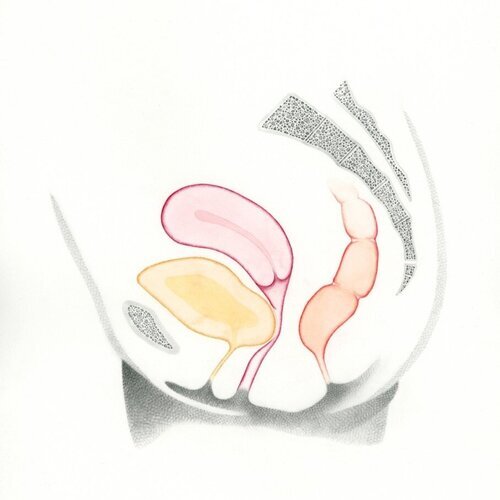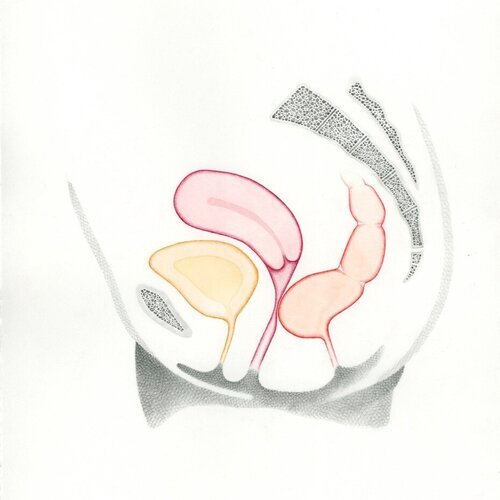Exercising with a Pelvic Organ Prolapse
The thought of a prolapse can make women cringe, but it’s more common than you think. According to the Continence Foundation of Australia, half of all women who give birth to a child will experience some degree of pelvic organ prolapse (POP). Women in every country of the world experience POP yet despite this, there is still a lot of misunderstanding and stigma. Living with a prolapse can cause embarrassment and emotional distress as well as impact general daily living.
What is a pelvic organ prolapse?
Your pelvic organs include your bladder, uterus (womb) and bowel. These organs are supported by a hammock of muscles located between the tailbone (coccyx) and the pubic bone within the pelvis. These muscles are known as the pelvic floor muscles.
Ligaments and connective tissue also work to suspend and hold your organs in place. If these muscles or tissues are weakened or damaged, the organs can drop down or bulge into the vagina. This is known as a pelvic organ prolapse. Sometimes, it is just referred to as a vaginal prolapse.
You may have heard the terms: cystocoele, rectocoele or uterine prolapse.
Cystolcoele is when the bladder bulges into the vagina (see left image)
Rectocoele is when the texture or bowel bulges into the vagina (see middle image)
Uterine is when the uterus descends into the vagina (see right image)
Why does a prolapse happen?
Essentially a prolapse can result from anything that puts pressure on the pelvic floor, such as:
Pregnancy and childbirth
Regularly straining when going to the toilet to pass bowel motions or urine
Repetitive lifting of heavy weights
Repetitive lifting of children or grandchildren
Chronic coughing
Postmenopausal women are more susceptible to prolapse. This is because oestrogen levels decline significantly during perimenopause, falling to extremely low levels after menopause.
Oestrogen helps to keep the pelvic floor muscles toned. Once oestrogen levels drop these muscles become thinner, weaker and less elastic. The vaginal tissues also weaken, meaning the pelvic organs are more likely to bulge into the vagina.
Symptoms of prolapse
The symptoms of prolapse can vary significantly for people and depend on individual factors such as the severity of the prolapse and the level of physical activity. Some symptoms can include:
A feeling of fullness or pressure in the vagina
A bulge or swelling the vagina
A feeling of heaviness or dragging
Problems completely emptying the bladder or bowel when going to the toilet
Bladder or bowel urgency or incontinence
Difficulty starting the flow of urine or a slow flow that starts and stops
Lower back ache
If you are still menstruating, the symptoms of prolapse can feel worse at different times of your cycle; as well as if you are oestrogen depleted such as after giving birth and for at least the first 6 months of breast feeding.
It can also feel different after exercise or certain daily activities.
Where do I go to seek help?
A prolapse is diagnosed by taking a thorough medical history and do a physical examination. This will help to determine how severe the prolapse is, what organs are involved in the prolapse, and the function of the pelvic floor muscles.
You can start by seeing your General Practitioner, local continence clinic, Gynaecologist or Women’s Health Physiotherapist.
Tips for exercising with a prolapse
Some forms of exercise can make a prolapse worse. If you have a prolapse it is likely that you have weakness in your pelvic floor muscles and supportive tissues. Exercise places downward pressure on the pelvic floor. If the pressure is too great for the pelvic floor to withstand, it can contribute to stretching, and further weakening of the muscles and supportive tissues and make them less able to support your already prolapsed organs.
If you have a prolapse, it is important to consider if the exercise you are doing is safe. Additionally, some exercises can help to support the prolapse.
Some key questions to ask yourself:
How much downward pressure or strain does this exercise have on my pelvic floor?
How strong and well-functioning is my pelvic floor?
Some general tips are:
Avoid or reduce high impact exercise '
o This includes running, jumping, skipping etc
Integrate low impact exercise
o Walking
o Road cycling
o Water based exercise (e.g. deep water running)
o Indoor cycling (stay seated and choose low gears)
o Low impact fitness classes
Try stepping instead of jumping in your group exercise classes
Maintain a good posture
Be mindful of your strength exercises:
o Reduce the amount of weight or resistance you are using
o Avoid holding your breath (exhale with effort)
o Choose supported positions when using weights i.e. lying or sitting when using hand weights
o Avoid wide leg deep squats
Be mindful of abdominal or core exercises. Avoid or modify:
o Traditional or weighted sit-ups or crunches
o Traditional pilates Hundreds
o Traditional Planks
Integrate extra rest breaks into your routine as needed, or reduce the number of reps you do
What about pelvic floor exercises?
Pelvic floor muscle exercises are important and do have a role in improving motor control and function of the pelvic floor; however, these exercises alone are unlikely to improve your prolapse.
The management and prevention of prolapse includes a range of interventions, best overseen by a suitably qualified health professional such as your GP, Gynaecologist, Continence professional or Women’s Health Physiotherapist.
Where to get more information
For more about pelvic organ prolapse in general, or how to safely exercise with a prolapse, try:
REFERENCES
JEAN HAILES FOR WOMEN’S HEALTH. AUGUST 2018. PROLAPSE. ACCESSED ONLINE AT: HTTPS://WWW.JEANHAILES.ORG.AU/HEALTH-A-Z/BLADDER-BOWEL/PROLAPSE-BLADDER-WEAKNESS
EXERCISE RIGHT. PELVIC ORGAN PROLAPSE (POP) AND EXERCISE. ACCESS ONLINE AT: (POP) AND EXERCISE. ACCESS ONLINE AT: HTTPS://EXERCISERIGHT.COM.AU/PELVIC-ORGAN-PROLAPSE-POP-AND-EXERCISE/
AUTHORS
DR RHEA PSERECKIS (MEDICAL DIRECTOR), PETA TITTER (FOUNDER & SENIOR EDUCATOR)
DISCLAIMER
THE CONTENT PROVIDED ON THIS WEBSITE IS FOR EDUCATION AND INFORMATION PURPOSES ONLY. IT IS NOT INTENDED TO REPLACE INDIVIDUAL HEALTH PROFESSIONAL CARE. READ OUR FULL DISCLAIMER HERE




